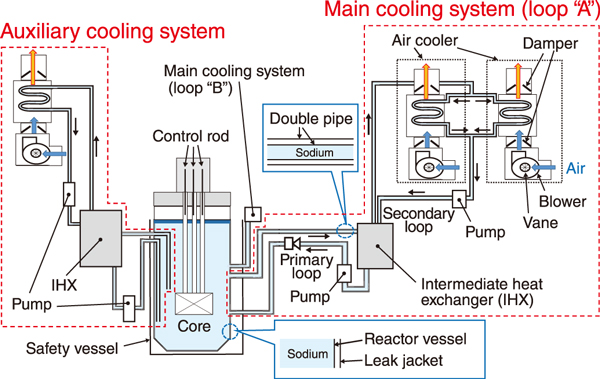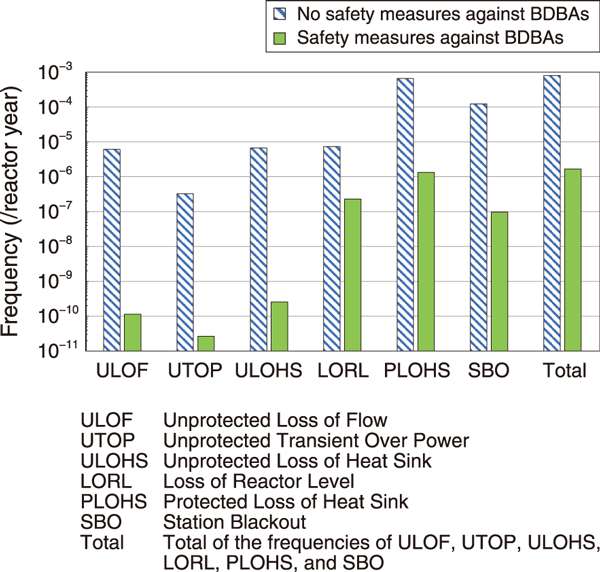
Fig.1 Main components to ensure reactor safety

Fig.2 Occurrence frequencies with/without beyond design-basis accident measures
Since the accident at TEPCO’s Fukushima Daiichi NPS, nuclear power plants in Japan are required to adopt safety measures against beyond design-basis accidents (BDBAs), which can cause core damage. To identify effective measures, we examined a wide variety of events, failures, and their combinations. The effectiveness of the measures can be determined by comparing the occurrence frequency of an event before and after the measure is adopted, and this evaluation should be done quantitively through probabilistic risk assessment (PRA).
Assuming that a BDBA occurs in a fast reactor of JAEA during its in-service operation, we assessed the effectiveness of the measures against events. The reactor is designed to remove heat from the core by using the air cooler in the main cooling system during normal operation (Fig.1) and to shut down automatically if an abnormal event, called an initiating event (e.g., loss of off-site power and coolant leakage), occurs. The coolant level is maintained by passive components such as leak jacket, and the decay heat is removed by forced or natural circulation of the coolant, thereby safely shutting down the reactor. If the main cooling system loses its function, the auxiliary cooling system takes over the function.
First, for the reactor with no safety measure against BDBAs, we identified the events that can cause core damage and quantified their occurrence frequencies through PRA. Then, we quantified their occurrence frequencies for the reactor with measures such as backup components and natural coolant circulation without any power source. The component failure rates used in this assessment were based on the component reliability database CORDS developed by JAEA; this database contains the experiences of operation and failure of components of fast reactors in Japan and the U.S. The assessment also reflects the reactor-specific experiences of operation and failure.
The results show that the measures can achieve a three-digit reduction in the total of the frequencies of the events (Fig.2) and that the event with the highest frequency is the protected loss of heat sink (i.e., loss of decay heat removal functions), both with and without the safety measures. Without the safety measures, a combination of loss of off-site power and loss of forced circulation would have the highest frequency. However, if the measure for natural circulation in the main cooling system (i.e., the primary system) is adopted, a three-digit decrease in the combined event frequency is achieved, demonstrating the effectiveness of the measure.
Since we assessed the effectiveness of the measures under operational conditions, we can identify the events that may involve core damage during shutdown conditions and their frequencies in the future.
(Hiroyuki Nishino)
<Previous: 2 Research and Development of Fast Reactors | Next: 2-2>